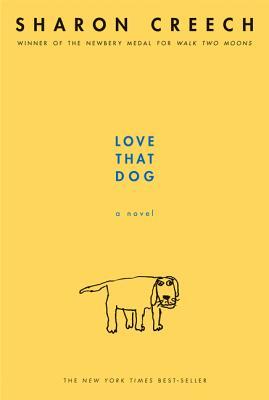 As a 5th grade teacher, I would always have students moan, eyeroll, and state either dramatically or smugly, “I’ve read that book,” when I would pull out Love That Dog, by Sharon Creech.
As a 5th grade teacher, I would always have students moan, eyeroll, and state either dramatically or smugly, “I’ve read that book,” when I would pull out Love That Dog, by Sharon Creech.
“Yes, I’m sure you have,” I would reply sweetly. “But never the way you are going to read it with me.”
An Adventure in Reading and Writing
I always tried to carve out two weeks in the spring for this text, and use it as a reading and writing experience.
As readers, we were able to infer quite a bit about our main character, Jack, and his teacher, Miss Stretchberry. We could easily select character traits and defend them with evidence from the text. We were able to think deeply about Jack and the changes we saw in him as a learner and a person.
We also got to experience poetry in multiple ways: from our own experience and Jack’s experience, and using poems as mentor texts for writing. I will tell you this: No matter if they had read the story before, or even heard it before, my students always ended up loving this experience.
How It Works: Reading
If you are not familiar with this story, it is a must read. But please, please read it this way:
When Jack first mentions a poem within the text, stop immediately and read the poem. (As a teacher, I would project the poem at the beginning of our Language Arts time, read it aloud, and then immediately go into the text to hear what Jack had to say about it.) Then process as readers what is happening in the story and the poem. I had post-its throughout my text about the poems, as well as the stopping points where I wanted students to reflect.
Surprise–Writing!
After each day that we read a new poem, my students would be tasked with using the poem as a mentor text. We would spend some time talking about the structure and meaning, and because I taught students with a wide range of abilities, I would always have scaffolds in place to make these structures were accessible for all students.
The kids loved this. We would write multiple versions using the same mentor text and they were excited to publish and share their writing. Many would ask to publish theirs on their blog pages or to hang theirs in the hallways. This excitement was contagious and carried throughout the month.
A Springboard
This text was a great springboard into exploring a variety of poetry styles. I also used A Kick In The Head, An Everyday Guide to Poetic Forms and A Poke in the I, A Collection of Concrete Poems to further our study and writing. There is a little something for everyone in these books so it is easy to bump things up for students who need a challenge.
Spring is a great time to explore Haiku as well. Take a walk, notice some things in nature, and write! The structure is a good way to talk about word choice as well. (It doesn’t hurt to review syllables either!) There are many examples of haiku out there. I stuck to making them about nature but you can do what works for your students!
There are so many resources out there to explore poetry with your students in April. Check out 30 ways to celebrate, the Poetry Foundation, Scholastic Poetry Resources, and listen to ordinary Americans reading poetry at the Favorite Poem Project. (Be sure to preview first.)
I hope that you will dive in and explore this month–there is so much to discover. You’ll be amazed what you find.
 Beth Rogers (@bethann1468) has taught in the elementary setting for the past 11 years. During this time, she earned her Master’s in Educational Technology from Michigan State University. This year, she is in a new position: Instructional Technologist K-12. This gives her the unique opportunity to work with teachers and students, district wide, to incorporate technology into their teaching and learning, in ways that engage, enhance, and extend the learning. She has already already begun to work with multiple classrooms to engage students in blogging, and to help teachers understand the power of this platform. At home, she lives with her husband, sons, and an anxiety-ridden German Shepherd who requires inordinate amounts of time and attention.
Beth Rogers (@bethann1468) has taught in the elementary setting for the past 11 years. During this time, she earned her Master’s in Educational Technology from Michigan State University. This year, she is in a new position: Instructional Technologist K-12. This gives her the unique opportunity to work with teachers and students, district wide, to incorporate technology into their teaching and learning, in ways that engage, enhance, and extend the learning. She has already already begun to work with multiple classrooms to engage students in blogging, and to help teachers understand the power of this platform. At home, she lives with her husband, sons, and an anxiety-ridden German Shepherd who requires inordinate amounts of time and attention.


 Bethany Bratney
Bethany Bratney
 Michael Ziegler (
Michael Ziegler (